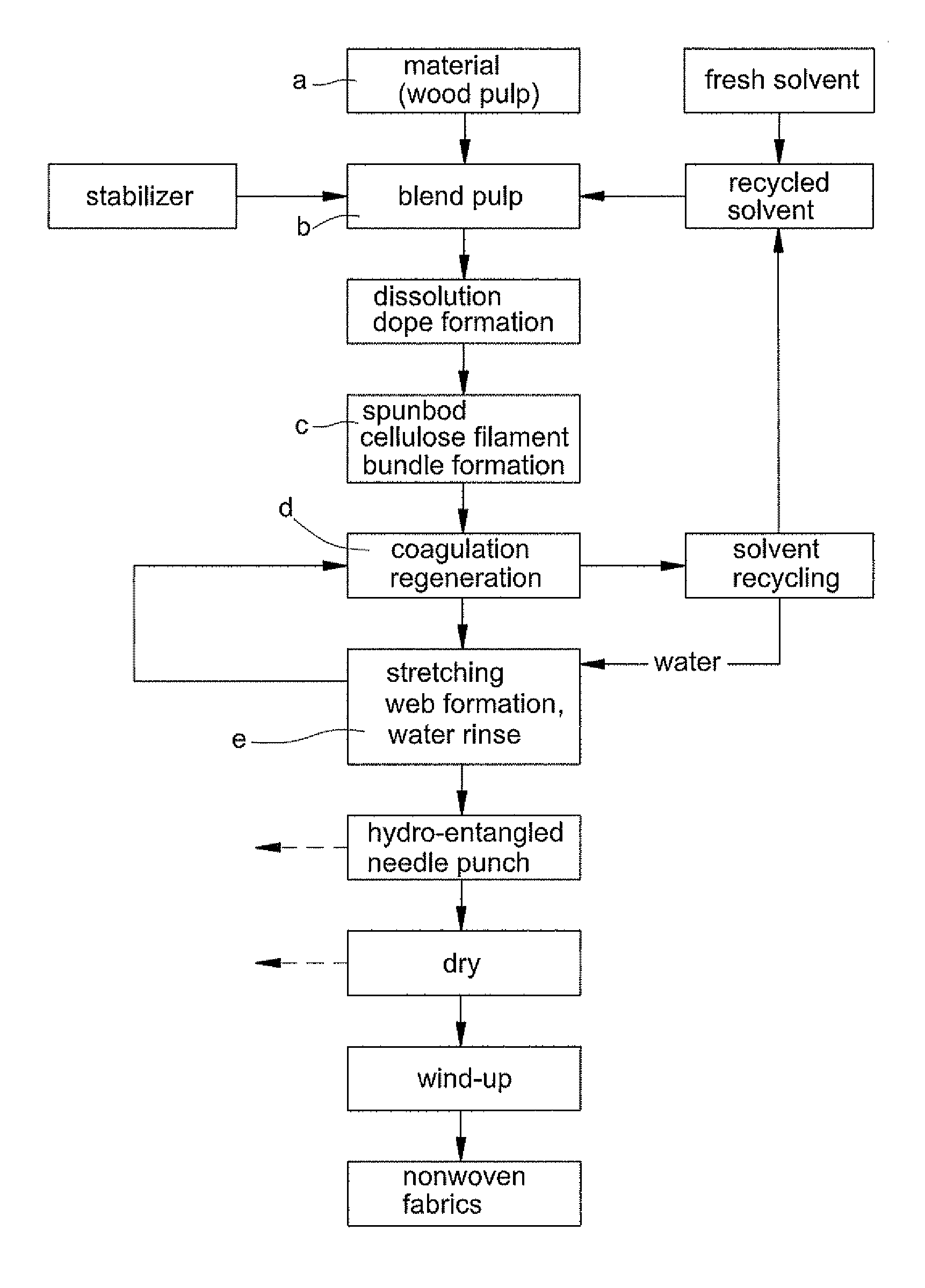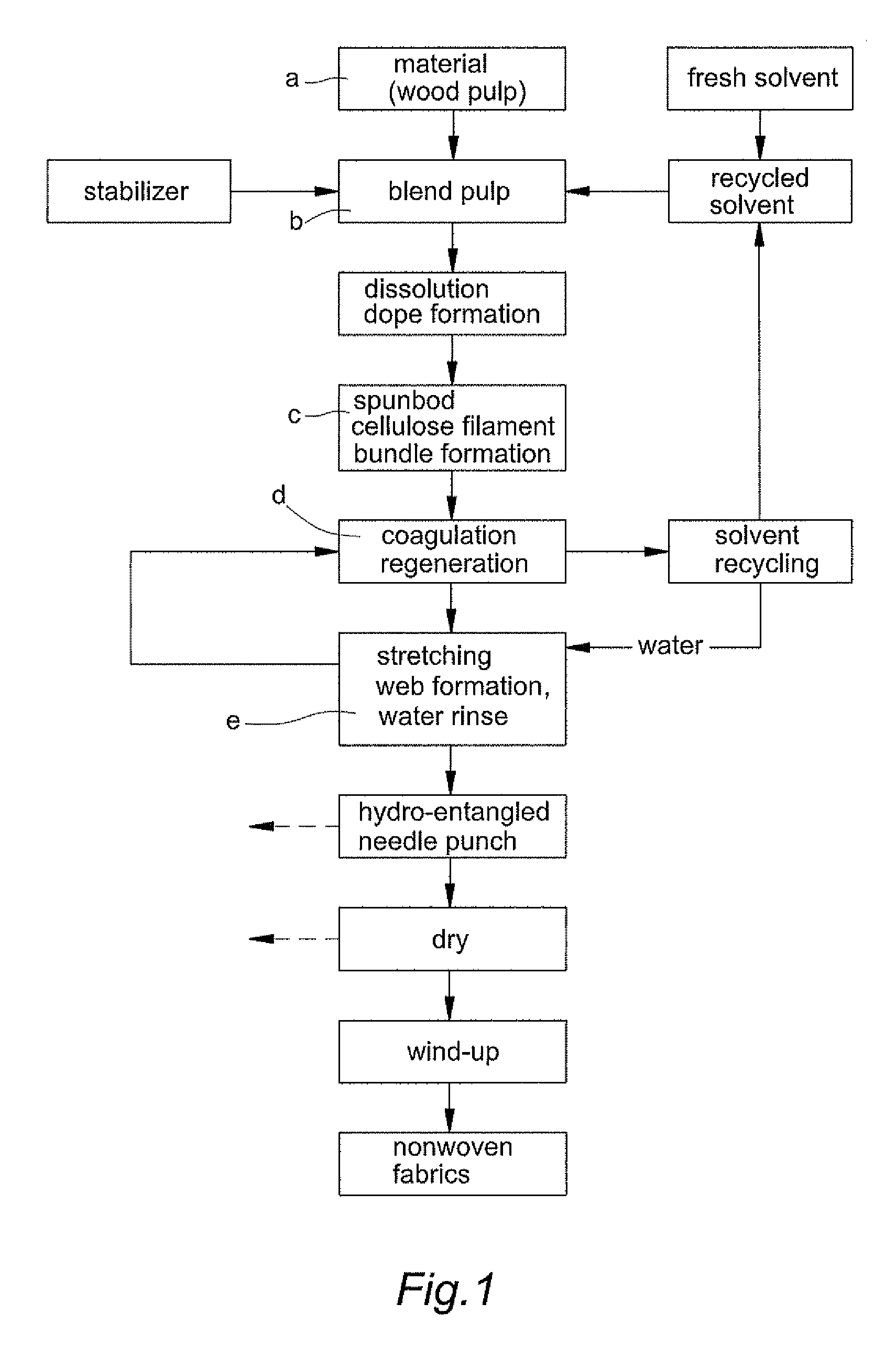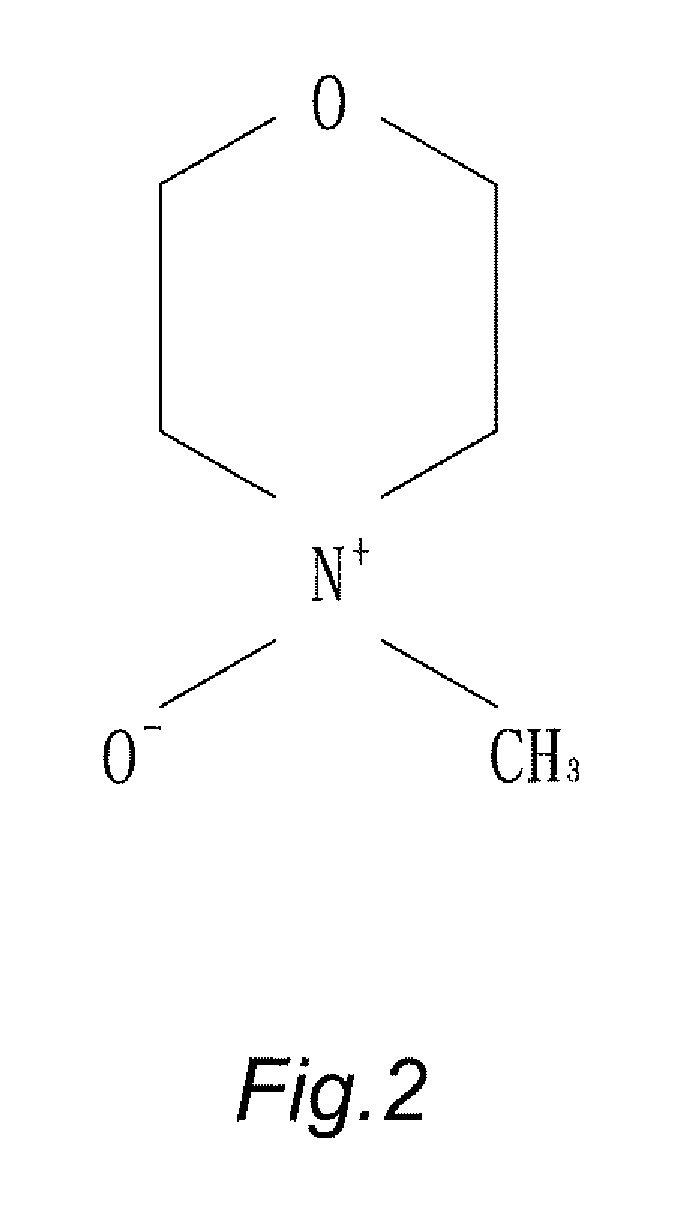Spunbond wetlaid method for producing non-woven fabrics from natural cellulose
a technology of natural cellulose and wetlaid fabric, which is applied in the direction of needling machines, other domestic articles, pattern making, etc., can solve the problems of increased acquiring cost, increased acquiring cost, and increased environmental impact of wasted nonwoven fabric of chemical synthetic fiber after having been used, so as to achieve better air permeability and low manufacturing cost
- Summary
- Abstract
- Description
- Claims
- Application Information
AI Technical Summary
Benefits of technology
Problems solved by technology
Method used
Image
Examples
Embodiment Construction
[0010]For further disclose the fabricating process and efficacy, detailed description for some preferred exemplary embodiments with associated drawings is presented below. Please refer to FIGS. 1 through 5, show processing steps of fabricating method for embodiments of a “spunbond wetlaid method for producing non-woven fabrics from natural cellulose”, as follows:
[0011]a. Material Selection and Preparation: Select wood pulp as raw material, preferably pulp cellulose of staple or filament with content cellulose being over 65% and degree of polymerization (DP) being between 500˜1200;
[0012]b. Dope Blending and Dissolution: By putting N-methylmorpholine N-oxide (NMMO) (whose chemical structure as shown in FIG. 2) as dissolving solvent and 1,3-phenylene-bis 2-oxazoline (BOX) as stabilizer into prepared pulp for rapidly grinding, blending and dissolving under low temperature between 60 degree of Celsius and 80 degree of Celsius (60° C.˜80° C.) by horizontal dope blending machine by means o...
PUM
| Property | Measurement | Unit |
|---|---|---|
| temperature | aaaaa | aaaaa |
| temperature | aaaaa | aaaaa |
| degree of polymerization | aaaaa | aaaaa |
Abstract
Description
Claims
Application Information
 Login to View More
Login to View More - R&D
- Intellectual Property
- Life Sciences
- Materials
- Tech Scout
- Unparalleled Data Quality
- Higher Quality Content
- 60% Fewer Hallucinations
Browse by: Latest US Patents, China's latest patents, Technical Efficacy Thesaurus, Application Domain, Technology Topic, Popular Technical Reports.
© 2025 PatSnap. All rights reserved.Legal|Privacy policy|Modern Slavery Act Transparency Statement|Sitemap|About US| Contact US: help@patsnap.com



